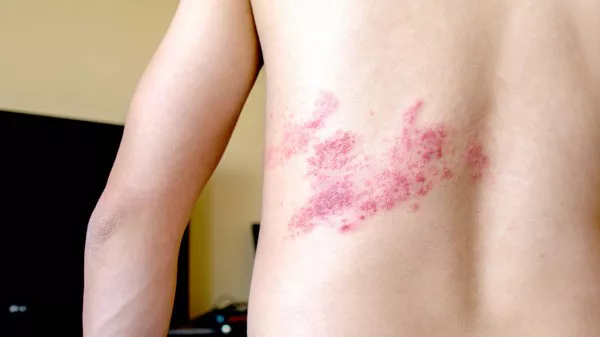Shingles, a distressing viral infection stemming from the varicella-zoster virus, known for causing chickenpox, manifests as painful blisters and rashes, affecting those with a prior history of chickenpox. However, not all individuals with a chickenpox history develop shingles. The emergence of shingles can be attributed to various factors, including a compromised immune system, stress, advancing age, specific medications, recent surgical procedures, and underlying medical conditions that undermine immunity.
The Centers for Disease Control and Prevention (CDC) reports that approximately one-third of individuals in the United States will encounter shingles at some juncture in their lives, with adults aged 50 and above at higher risk. Consequently, the CDC advocates for the administration of two doses of the Shingrix vaccine as a preventative measure against shingles.
Defined by the World Health Organization as herpes zoster, shingles manifests as a painful rash capable of inflicting lasting nerve damage or vision impairments. It stems from the varicella-zoster virus, which also triggers chickenpox. Individuals with a history of chickenpox are believed to be susceptible to shingles due to the latent presence of the virus within nerve cells post-chickenpox infection.
Shingles materializes as a red rash on the skin, accompanied by intense pain and a burning sensation, typically localized to one side of the body, such as the torso, neck, or face. Unlike chickenpox, shingles is confined to specific areas. While most cases resolve within 3-5 weeks, the condition can recur multiple times, potentially affecting one’s quality of life. Symptoms encompass aching, burning, and stabbing pain, with potential complications like post-herpetic neuralgia. Vaccination is recommended for individuals over 50, those with compromised immune systems, and others. Shingles is non-contagious unless direct contact occurs with the blisters by individuals lacking immunity to chickenpox, according to experts.
Symptoms:
Pain and Burning Sensation: Initially, shingles presents with localized pain and a burning sensation, typically on one side of the body within a specific skin area called a dermatome, followed by the emergence of a red rash.
Red Rash: Within days, a distinctive red rash appears, usually on one side of the body or face. The rash’s color varies depending on skin tone, ranging from dark pink to purplish or brown, accompanied by itching and a burning sensation.
Blisters: As the rash progresses, fluid-filled blisters form on the reddened skin, varying in size and prone to rupture, causing significant pain.
Flu-like Symptoms: Some individuals may experience mild fever, headache, fatigue, and muscle weakness, indicative of the body’s natural response to infection and inflammation, particularly in severe shingles cases.
Itching and Sensitivity to Touch: The affected area may itch, but scratching can exacerbate discomfort and heighten infection risk. Additionally, the skin may become sensitive to touch, causing pain or discomfort even with light contact.
Scabbing: After blister rupture, shallow ulcers develop, followed by scab or crust formation as part of the healing process.
Causes of Shingles: Shingles results from the reactivation of the varicella-zoster virus, responsible for chickenpox, particularly affecting individuals with a prior history of chickenpox. However, why it affects some individuals and not others remains unclear. Ageing plays a significant role, as the natural decline in immune function can facilitate virus reactivation, triggering shingles symptoms localized to one side of the body.


























